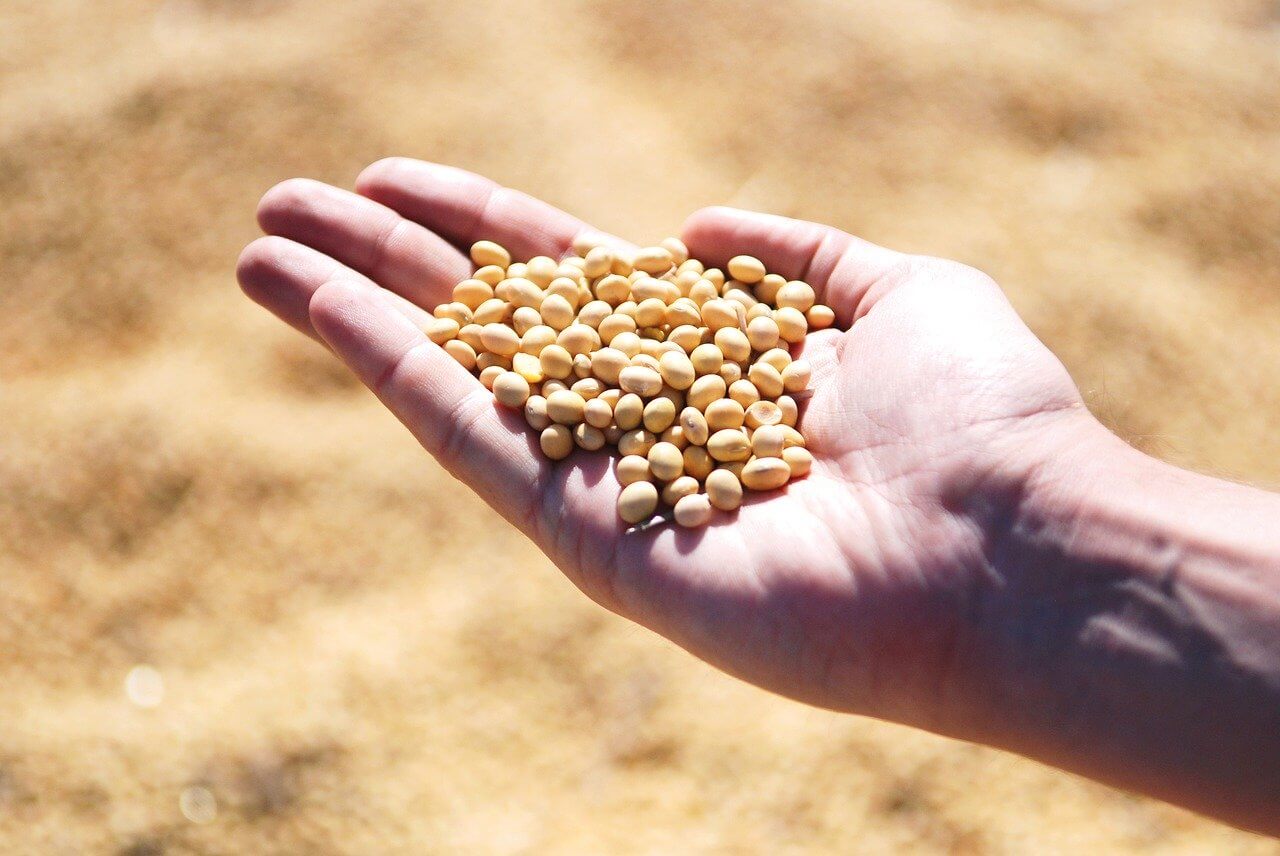Fat is an essential part of the diet for any mammal, be it a human, farm animal, or pet. This is because some essential nutrients can only be absorbed by the body if first dissolved. Some are water-soluble, but others are only fat-soluble, such as vitamins A, D, E, and K. These nutrients are necessary for good health. Oils also provide high levels of energy for growth, as they have a high calorific density. In this article, we will be looking at how to extract oil from soybeans for adding to animal feed.
What You'll Learn Today
Why Add Soybean Oil to Animal Feed?

The advantages of adding soybean oil to animal feed include:
- Increased dietary energy utilization
- Improved palatability of feed
- Better fat-soluble vitamin absorption
- Increased stamina
- Faster growth rate and performance
- It can help to decrease dust in feed, thus helping to avoid respiratory problems
- Improved immune function in pigs
- Feeding to pregnant sows late in gestation helps improve the survival rate of the litter
Soybean oil is high in omega 6 oil. For breeding livestock or egg-laying chickens, any omega 6 must be balanced with omega 3 oil.
Oils high in omega 3 are generally derived from flax seeds when feeding animals. Other sources include chia seeds, hemp seeds, walnuts, and fish oils, but these are usually only for human use.
Omega 3 oils can help to improve immune function and fertility. The ideal ratio of omega 3 to 6 varies from animal to animal.
Different Methods of Extracting Soybean Oil
Commercially soybean oil is generally extracted using a chemical process that uses hexane. However, the healthiest way to remove the oil is by cold pressing the beans.
Cold pressing can be scaled, and there is a wide range of machines available to do the job. These range from simple hand-cranked devices right up to large electric and mechanical presses.
A good range is available on Amazon, rising in price from $100 to $1000. The more expensive presses can handle larger volumes and are more powerful.
Heavy-duty commercial oil presses are also available from specialist manufacturers and can be sourced direct online.
Quantity of Soybean to Oil

A soybean contains around 18% to 20% oil. 2.2lbs (1kg) of soybeans will produce different amounts of oil depending on the method of extraction used.
Pressing can release up to 4.6oz (130g) of soybean oil in a commercial press, and solvent extraction can give around 6.7oz (190g).
The reason for these differences is because pressing leaves some oil, about 7% to 10% in the soybean residue or cake as it is called. With the chemical solvent extraction method, less than 1% oil is left in the residue.
If you produce more than 30 tons of soybeans, it will be better to find an extraction plant to remove the oil using chemical extraction.
If you have less than this, then a press will do the job well and leave you with plenty of cake to feed livestock or use as fertilizer.
Small electric and hand presses are really only suitable if you are going to extract relatively small quantities of oil, enough to feed livestock on a small farmstead, for example.
How to Extract Oil from Soybeans

Whether you will be pressing your own soybeans at home, or sending many tons to an oil extraction plant, several processes are required before the oil can be taken from the seed.
1. Impurities
Stones, grit, leaves, twigs, and so on must be removed, leaving only the soybeans.
2. Crushing
For some machines crushing the soybeans before processing helps to make the oil easier to extract.
3. Heating
By heating the beans gently before extraction, more oil will be released. This can be done by spreading out the beans on a clean sheet in the sun or by putting them in a shallow pan and warming them in an oven. You aren’t trying to cook them, just heat them up to help release the oils.
If you’re going to use homegrown soybeans, ensure they are fully ripe before harvesting and have been allowed to dry before pressing. Beans purchased from a store should be good to go.
This is a video of a small electric press in action.
Pressing Your Soybeans [Step By Step]
Before using your press, ensure it is assembled correctly and read any instructions carefully, paying particular attention to any safety notices.
Below I will give you a rough guide on how to press your soybeans, but you must always follow the manufacturer’s guidelines for your particular type of press as these may vary.
- Your press will have a hopper where you can place the warm beans, or in small hand-cranked models, you can use a soda bottle with the bottom cut off. Fill it to around 2/3 full.
- Place the oil collection container where directed for your press, so it can capture the oil as it is expelled from the machine.
- A large container will need to be used at the end of the press where the soybean cake will come out.
- If you have a hand-cranked press, you may need to light the oil wick and allow the machine to heat up before you begin pressing the soybeans.
- Press the start button or start turning the hand crank to begin pressing your soybeans.
- You’ll notice the soybean cake coming out from the end of the machine, and gradually, the oil will start dripping into your oil container.
- Refill the hopper as necessary with more soybeans until they are all gone.
- Watch how full your oil container is getting and replace it with an empty one as required.
- If your oil needs to be poured into jars, do this now and then put lids on them. Put the jars somewhere warm and dark overnight.
- Clean your machine and any other equipment used thoroughly, as directed in the manufacturer’s instructions.
- The following day, remove the lid from each jar of oil and pour off any separated liquids or other matter. It is usual for some water to be mixed in with the oil, and this just needs to be poured off.
- Replace the lids, and your oil is now ready to use.
Frequently Asked Questions

Soybean cake, also known as soybean meal or soybean protein concentrate, is typically mixed with other feed ingredients to create a balanced diet. As a general guideline, you can consider the following percentages: Poultry: Soybean cake can be included in poultry feed at around 10-20% of the total feed formulation; Cattle: Soybean cake can be used in cattle feed at approximately 20-30% of the total feed formulation; Pigs: Soybean cake can be added to pig feed at approximately 10-15% of the total feed formulation. These percentages can vary based on factors such as the specific nutritional requirements of the animals, their age, weight, and overall diet composition. Be sure to talk with your veterinarian or animal nutritionist to determine the exact percentage suitable for your animals.
Soybean cake contains significant amounts of nitrogen, phosphorus, and potassium, which are essential elements for plant growth. It can help improve soil fertility, enhance microbial activity, and promote healthy root development, leading to increased crop yields and overall plant vigor. When applied to the soil, soybean cake releases nutrients gradually, providing a sustained source of nutrition for plants. Here are some ways to utilize soybean cake in this regard: (i) Adding to the planting hole: When transplanting seedlings, you can incorporate soybean cake into the planting hole. Mix it with the soil at the bottom of the hole to provide nutrients to the young plant; (ii) Mixing in potting soil: You can mix soybean cake into potting soil before planting. This helps enrich the soil with nutrients and enhances the fertility of the growing medium; (iii) Side dressing: Soybean cake can be applied as a side dressing by broadcasting it around the base of plants. This method provides a slow release of nutrients over time. The application rates of soybean cake as a fertilizer can vary depending on factors such as the specific nutrient requirements of the plants and the soil conditions.
Crushing soybeans is typically done using specialized equipment, and it is not a process that can be easily performed by hand due to the hardness and size of the beans. There are various machines available for crushing soybeans, such as mechanical crushers, expeller presses, or solvent extraction systems.
Hexane is a highly volatile and flammable compound, but the residual levels in the extracted soybean oil are usually very low and are considered safe for consumption. Generally speaking, regulations, vigilant manufacturing practices and quality control measures are in place to minimize the amount of residual solvent that may be found in food-grade oils. This minimizes any potential negative effects of the hexane extraction method on soybean oil.
Soybean oil contains various bioactive compounds, including unsaturated fatty acids and phytochemicals, that have been shown to have positive effects on immune function in pigs. The fatty acids, such as linoleic acid and linolenic acid, play a crucial role in the development and maintenance of immune cells. Additionally, the phytochemicals present in soybean oil, such as isoflavones, have antioxidant and anti-inflammatory properties that can support immune health.
Conclusion
As you can see, extracting the oil from soybeans isn’t difficult if you have the right tools.
My advice would be to purchase the best press you can afford, as it will be worth the additional investment in the long run.
Remember that you can press a lot more than just soybeans with your press. It can be used to process all kinds of other seeds into oil too!